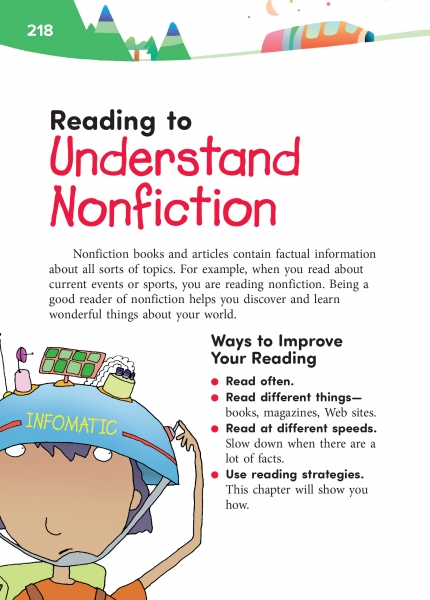Page 218 from

Start-Up Activity
Have your students open to a particular page in a social studies or science text. Ask these questions:
- What is the page about? (Example answers: "U.S. presidents" or "the water cycle")
- How do you know what the page is about without reading it? (Example answers: "that's what it says at the top" or "it shows a big picture of the guy with his name under it")
- What other clues tell you what a page is about before reading? (Example answers: "headings," "bold words," "definitions," "captions and/or tables")
On the board, list all of the clues that students identify. Point out that searching for visual clues is one strategy that can help students preview a nonfiction text. This chapter provides many other strategies for reading and learning from nonfiction. Then read aloud "Ways to Improve Your Reading" on page 218.
Think About It
“Reading is to the mind what exercise is to the body.”
—Richard Steele

Start-Up Activity
Have your students open to a particular page in a social studies or science text. Ask these questions:
- What is the page about? (Example answers: "U.S. presidents" or "the water cycle")
- How do you know what the page is about without reading it? (Example answers: "that's what it says at the top" or "it shows a big picture of the guy with his name under it")
- What other clues tell you what a page is about before reading? (Example answers: "headings," "bold words," "definitions," "captions and/or tables")
On the board, list all of the clues that students identify. Point out that searching for visual clues is one strategy that can help students preview a nonfiction text. This chapter provides many other strategies for reading and learning from nonfiction. Then read aloud "Ways to Improve Your Reading" on page 218.
Think About It
“Reading is to the mind what exercise is to the body.”
—Richard Steele